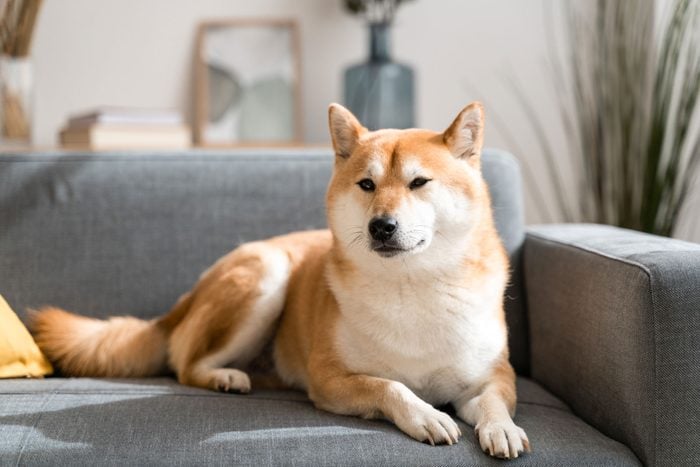
Independent dogs you can leave home alone
Your dream job may be a stay-at-home pup parent, but until that day comes, you’ll need to find the right dog to fit your schedule. While most pups are undoubtedly social animals, there are dogs that can be left alone. Maintaining a schedule that includes time away from the house doesn’t have to be a deal breaker. With training and the right preparation, dogs can adjust to a schedule that includes alone time—some may even enjoy the peace and quiet.
In fact, one recent study published in Nature found that some breeds are better suited for alone time than others, says Leticia Fanucchi, DVM, veterinarian and assistant clinical professor of animal behavior at Oklahoma State University. So which popular dog breeds can stay at home without a fuss? Thanks to expert insights from vets and dog behaviorists, as well as the findings of breed-specific studies, we’ve got the answers. Ahead, we explore 20 breeds that might be a good fit for busy schedules. But remember: Training and socialization before leaving dogs to their own devices is a top priority, no matter the beloved breed you choose.
Get Reader’s Digest’s Read Up newsletter for more pets, cleaning, humor, travel, tech and fun facts all week long.
About the experts
|
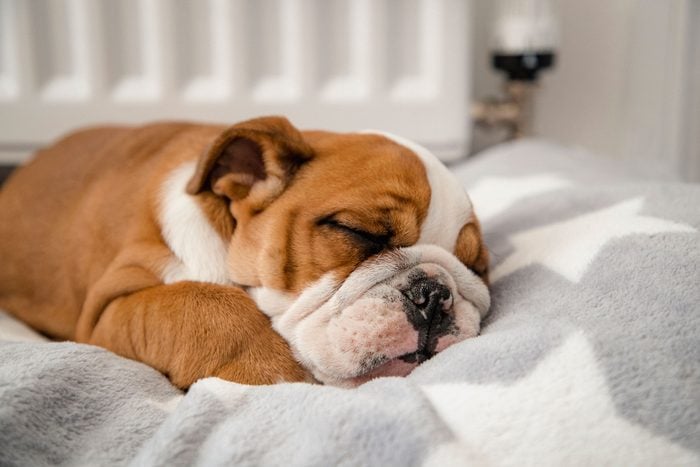
Preparing your dog for time alone
Separation anxiety is one of the most common behavior problems in dogs, according to the American Veterinary Medical Association. In fact, 20% to 40% of dogs referred to animal-behavior practices in North America are diagnosed with the disorder. “Whether you get your dog from a shelter, rescue or breeder, you need to prepare them for time alone,” says Jill Goldman, PhD, a certified applied animal behaviorist.
The best approach is practicing separation soon after bringing your dog home, even if it’s small steps like leaving them alone in another room. Goldman suggests to ping-pong the length of time you’re away between short and long absences so your dog doesn’t think that every time you’re away it will be for longer and longer periods.
Routine is also important from day one because it gives dogs a sense of control. One big mistake is not tiring your pup out before heading out the door. “Get them hungry so they eat a little something when you’re not there,” Goldman says. “Get them well-exercised so they’re more likely to sleep, and provide them with some enrichment, so if they are active, they have something to keep themselves busy.”
Because dogs have differing life experiences, Goldman emphasizes the need for individualized approaches to prevent or address separation anxiety. While some dogs might benefit from practicing “sit” and “stay” while you’re in another room, others might require desensitization to their triggers, such as reaching for the keys. When you’re looking for the best dogs that can be left alone, consider this: Steer clear of puppies. If you plan to spend lots of time away from home, adopt an older dog. Older dogs generally require less exercise and fewer bathroom breaks, says Amy Attas, DVM.
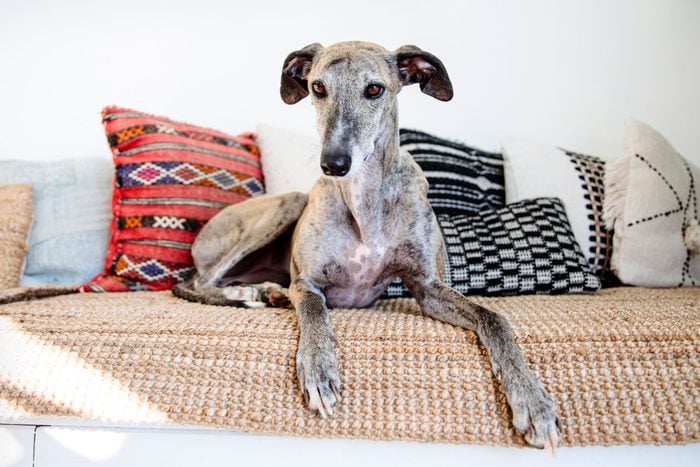
Greyhound
Greyhound retirees can be a great choice for people who are away from home for extended periods, says Dr. Attas. Often adopted in their middle age, these gentle dogs have retired from their racing careers and are content with a low-maintenance lifestyle, she says. Nicknamed the “fastest couch potato” for their love of napping, greyhounds are champion sleepers, logging an average of 20 hours per day, according to West Vet Animal Hospital.
Greyhound dad and canine fitness coach Sean Pritchard agrees. These laid-back pups are happy with a leisurely walk or two each day (about 60 minutes total), needing far less exercise than their pedal-to-the-metal beginnings might suggest. Plus, according to the American Kennel Club (AKC), the greyhound is especially gentle and a sweet-tempered companion.
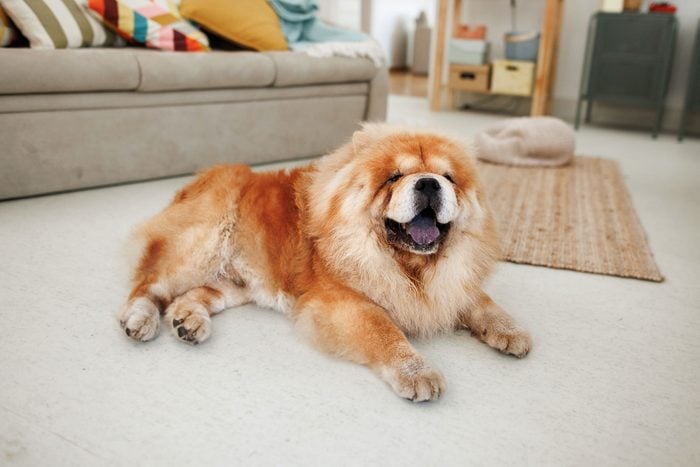
Chow chow
Chow chows weren’t bred to be cuddled and fussed over, and after their centuries-long streak of independence, they’d prefer it to stay that way. Their self-sufficient nature is exactly what makes chow chows ideal companions for those with busy schedules, says Dr. Attas. Chows don’t tend to bark much, according to the AKC, which might be a result of their regal history as companions to emperors and nobles. In other words, you can leave home without worrying about disturbing your neighbors.
However, the chow chow’s reserved nature means they might not appreciate midday check-ins from strangers, so plan to be home before their next potty break (about every 6 to 8 hours for healthy adults).
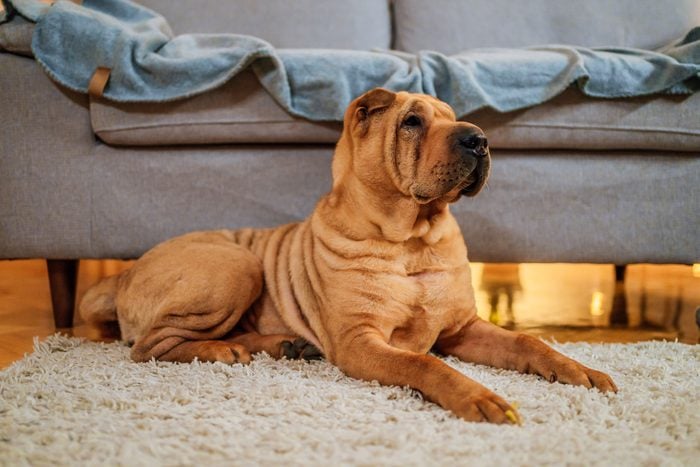
Chinese shar-pei
Shar-peis can be a good fit for busy pet parents, Dr. Attas suggests. She says that while no dog is completely immune to separation anxiety, breeds with independent streaks, such as the shar-pei, tend to tolerate alone time better. They’re instantly recognizable by their many wrinkles, and while these playful pups may not readily snuggle up with everyone, early socialization can help them become more sociable companions.
According to the AKC, the shar-pei breed’s mental stimulation needs fall somewhere between ready to lounge and need a job or activity. With some toys to keep them occupied while you’re gone, a shar-pei should be sufficiently occupied waiting for your return.
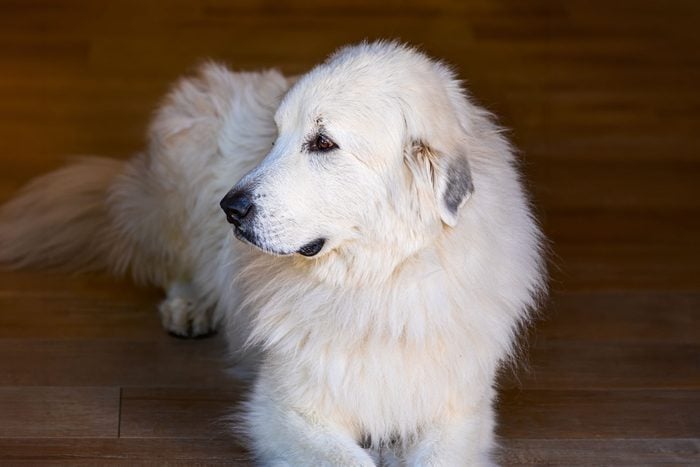
Great Pyrenees
The Great Pyrenees, affectionately called “Pyrs,” have a unique sleep schedule that might be a perfect fit for some pet parents. These immensely powerful but gentle giants prefer to snooze during the day and then roam the house at night, perhaps on an instinctual patrol mode leftover from their days guarding livestock in the Pyrenees mountains. When awake, Pyrenees exude a stoic calm and patience.
But take note: Great Pyrenees Rescue Montana says Prys are highly scent-motivated and can roam great distances (up to 10 miles!) if left off-leash or in an unfenced yard. However, the AKC reports they’re typically content with moderate exercise, so a good sniff-led walk before you head out the door will help keep them happy throughout the day.
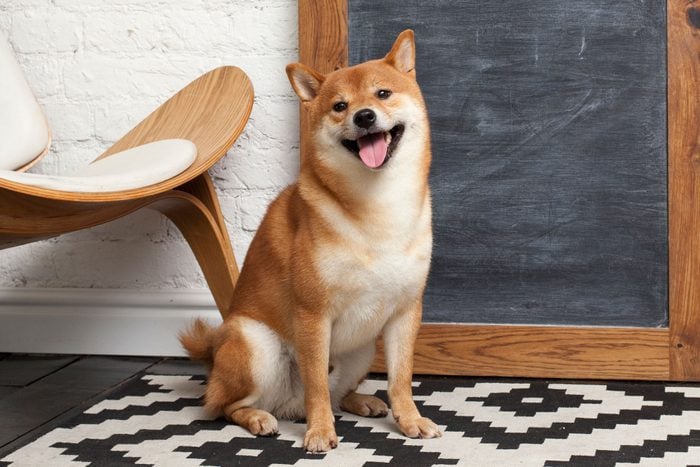
Shiba inu
A beloved Japanese dog breed, the shiba inu is a popular choice for its friendly yet independent personality, and can be good companions for those with busy lifestyles. Dr. Attas says their independence makes them less prone to separation anxiety, as long as they get enough exercise. In fact, after a good exercise session (at least 45 minutes a day), shiba inus can be perfectly content with some quiet time, provided they have a puzzle toy to keep them mentally stimulated, according to the Colorado Shiba Inu Rescue.
One thing to note: Their strong hunting instincts (a legacy from their 9,000-year-old heritage) mean that they should always be kept on a leash outdoors. Offering ample exercise before you leave home and when you return is also a must to prevent unwanted behaviors.

Japanese Chin
The Japanese Chins can be left at home without much worry. While they’re known to entertain themselves, Dr. Attas suggests offering puzzles or interactive toys for any pup left alone for the day. “Some dogs like to watch television, and you can leave one of the Animal Planet shows on,” she says.
But more often than not, these cat-like pups will curl up for a nap, perfectly happy with a life of simple living, according to the Japanese Chin Club of America. You might even find that your Japanese Chin takes command of their empty house by perching on furniture or posting up on a perch in the window.
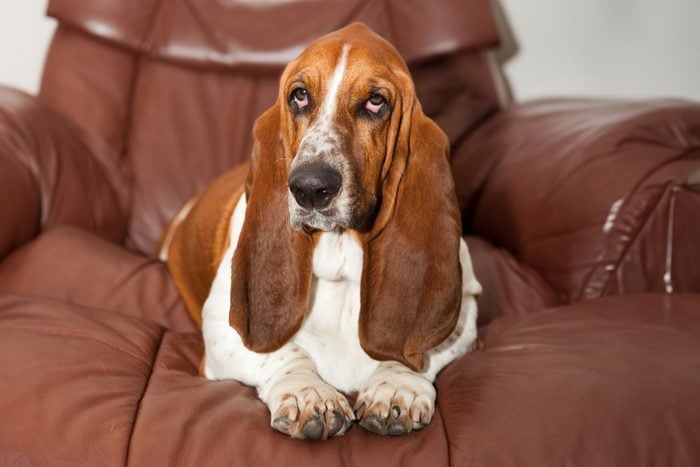
Basset hound
Basset hounds are another breed that may not mind being left alone, says Dr. Attas. Their independent nature might make training challenging, but it translates to a laid-back demeanor, she says. Described by the Houndful Hearts rescue as a “calm, sometimes lazy couch potato,” you could say that basset hounds would happily trade chasing rabbits for a comfy spot on the sofa. In other words, basset hounds are perfectly content with a quiet afternoon snoozing or chewing on a toy—their love for naps and minimal exercise needs make them adaptable to periods of solitude.
While they might be more than content to snooze, too much napping without enough outdoor time can lead to weight gain. A good walk or playtime session before or after work (or both!) will help them burn off energy and maintain an ideal weight.
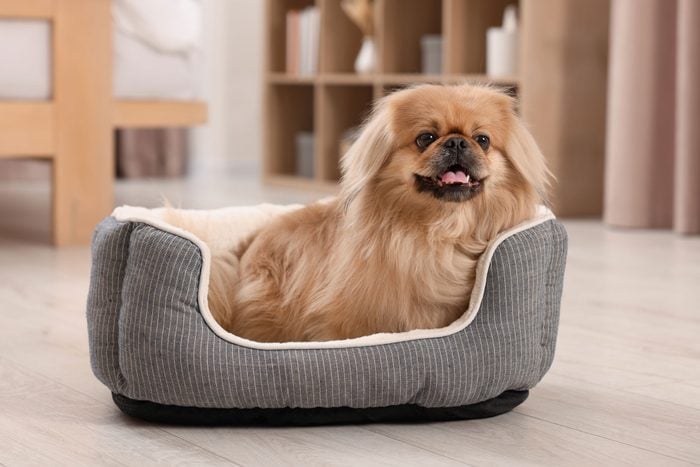
Pekingese
High-energy dogs like herding, sporting, terrier and working dogs can cover an impressive 5 miles in just 60 minutes and love the go-go-go lifestyle, Prichard says. But other dogs, such as the Pekingese, don’t have the same endurance, he says. A short walk or indoor play is enough to get them settled down for a day of solitude, which makes them a great dog to leave home alone. Plus, the AKC says these dogs rarely bark, making them a good choice for apartment dwellers.
However, keep in mind this cuddly breed will require potty breaks or an indoor potty station. “Small dogs can’t hold their pee for 12 or more hours,” Prichard says. According to the AKC, Pekingese are fairly open to meeting new people, such as a friend, neighbor or dog walker, so those people can help with midday potty breaks
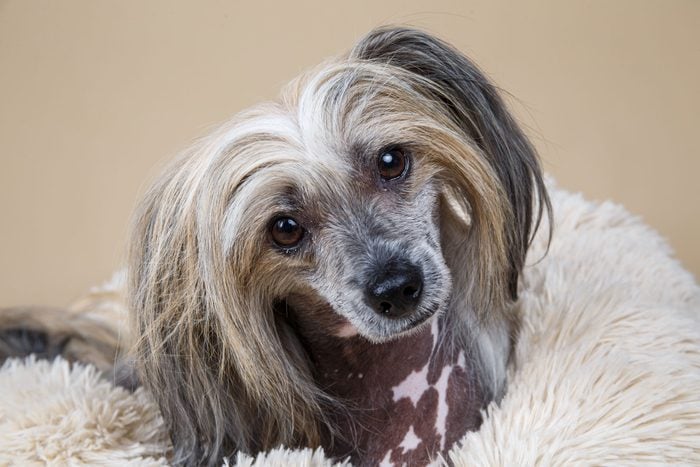
Chinese crested dog
Looking to add a plus one to your feline crew? The Chinese crested gets along famously with cats, offering companionship and cuddles when you’re away. Much like cats themselves, these dogs are relatively quiet, clean and don’t require intense daily exercise. Plus, a study published in Applied Animal Behaviour Science found they’re less likely to be bothered by loud noises, which means anxiety while you’re away may be at a minimum. According to canine separation anxiety specialist Jennifer Phillips, noise sensitivity can be a major factor in dog anxiety, so choosing a dog breed (like the Chinese crested dog) with little noise sensitivity is best for owners who are away often.
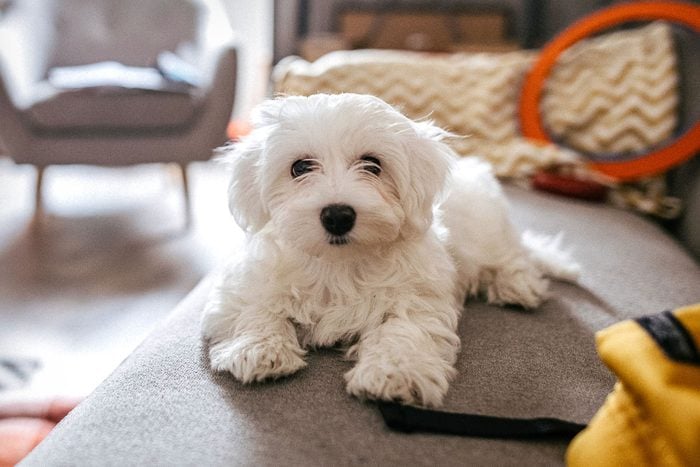
Maltese
Friendly and playful companions, Maltese pups often prefer doing laps around the house to hitting the trails. Phillips says in general, smaller dogs such as Maltese don’t need as much exercise as other breeds and therefore are among the dogs that can be left alone. In fact, the AKC states that “bouncing around indoors” can be enough exercise to wear out a Maltese for the day.
These small dogs are portable (6 pounds, 9 inches tall), and they can adapt to being left at home with proper training. To minimize barking at distractions while alone, Phillips suggests creating a calm environment by closing windows and blinds or keeping your pup in a quieter area of the house. Self-soothing activities like lick mats can also keep this breed content.
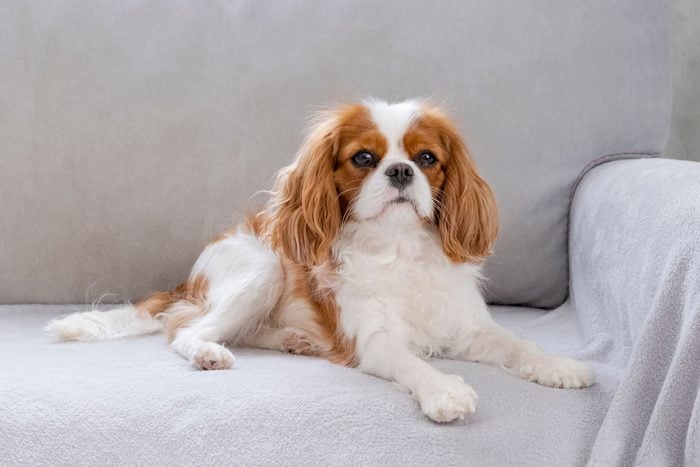
Cavalier King Charles spaniel
The Cavalier King Charles spaniel steals hearts with its floppy ears and undeniably sweet personality. While parting for a day at the office can be tough (couch cuddles are hard to leave), you can rest assured that with training, they’ll be OK while you’re gone. Because they’re eager to please (according to the AKC’s trainability rating), they’re more likely to learn and follow ground rules for when you’re not around.
However, be mindful of sticking to your routine and avoid staying away from home longer than usual. Dr. Attas cautions that the Cavalier King Charles spaniel can be prone to separation anxiety, which they might express with some nervous barking.
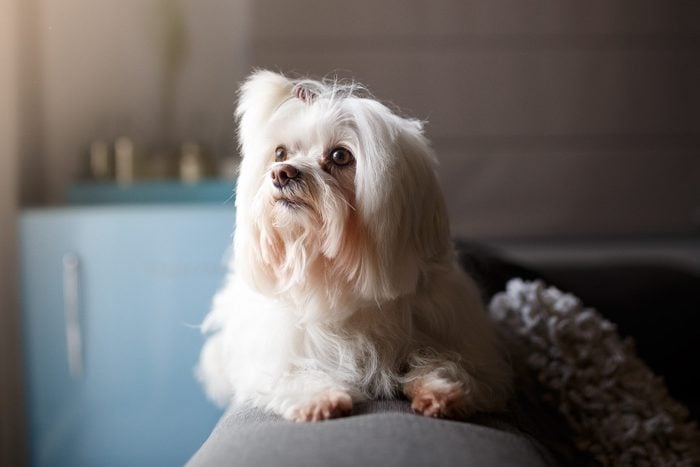
Lhasa apso
These dignified pups have a rich history that might explain their docile temperament and ability to spend time alone. Bred originally to guard Tibetan temples and monasteries, modern-day lhasa apsos have a sense of independence and self-reliance, says Dr. Attas. Lhasa Happy Homes Rescue recommends taking these pups on two 30-minute walks per day. With that, they’re considered dogs that can be left alone.
And while their signature flowing hair turns heads wherever they go, keep in mind that these luxurious coats require regular at-home grooming to prevent matting.
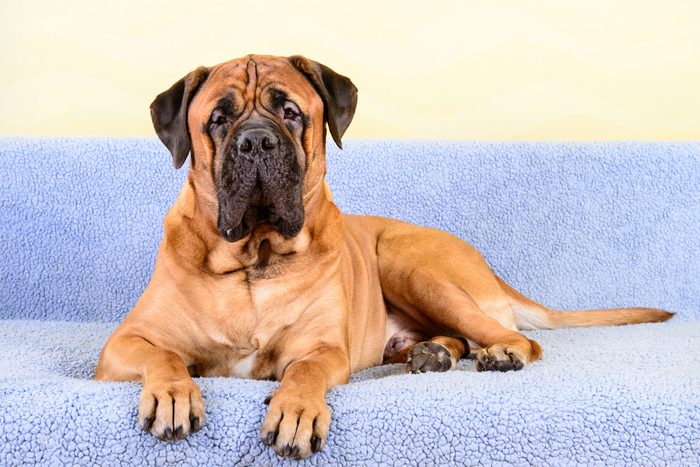
Bullmastiff
Dr. Attas says that the bullmastiff can adjust well to time alone with the right behavioral training. They may be more comfortable with solace because these large dogs were originally bred to help estate gamekeepers catch poachers at night. They’ll still dutifully fulfill their guard-dog instincts—or happily nap—while you’re away. But once you return home, make space for these cuddle monsters. Despite their size, bullmastiffs aren’t shy about gently nuzzling up.
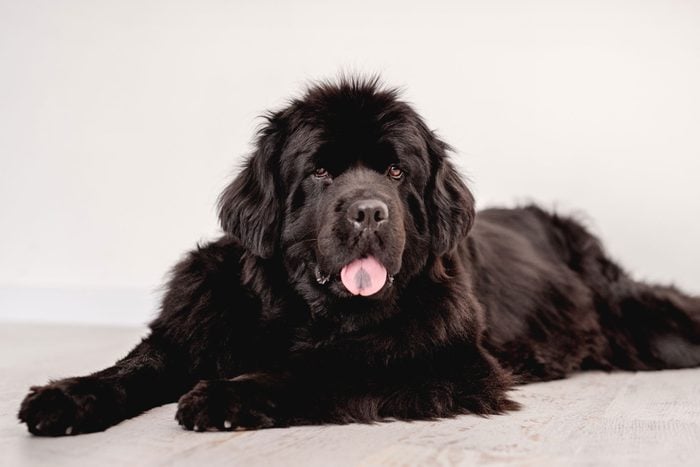
Newfoundland
Newfies might surprise you as dogs that can be left alone. They may be large, but they only require moderate exercise—around 30 minutes a day will keep them happy, according to the AKC. They’re known for their calm and collected demeanor, making them a great choice for families with children or seniors. Unlike some breeds that go wild at every doorbell ring, Newfies don’t tend to get overly excited by everyday occurrences (they only bark to alert, according to the AKC). It’s one of the many qualities that not only lends to their willingness to spend time alone, but also makes them ideal therapy dogs.
For pet parents who work outside the home, Newfies can handle moderate alone time. Just be sure to provide them with some mental stimulation and quality cuddle time when you return.
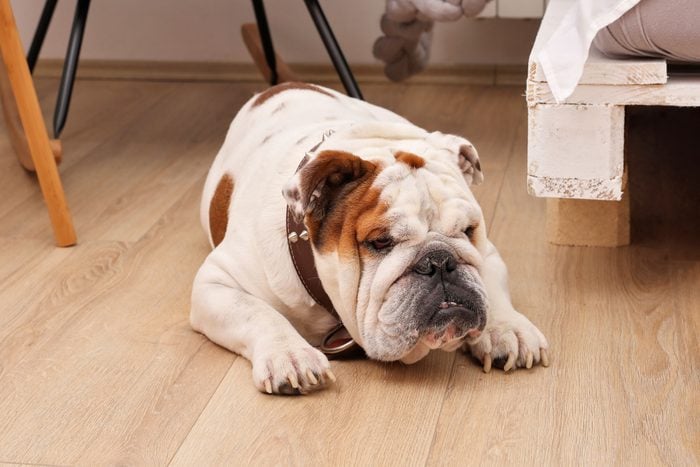
English bulldog
English bulldogs (simply called bulldogs by the AKC) are perfect companions for busy pet parents. Known as napping champions, according to Prichard, they’re one of the laziest breeds around. A short 10 to 15 minute exercise session is enough to satisfy them, and they’ll happily snooze the rest of the day. Even playtime is laid-back, with indoor playtime being their preferred (and recommended) activity as the temps rise outside.
Plus, they’ll keep themselves entertained while you’re gone. Certified dog trainer Frederica Caneiro suggests offering long-lasting chews or puzzle games with treats to keep your bully occupied while you’re away. And if you opt for a pet sitter, these wrinkled cuties are one of the least likely breeds to bite.
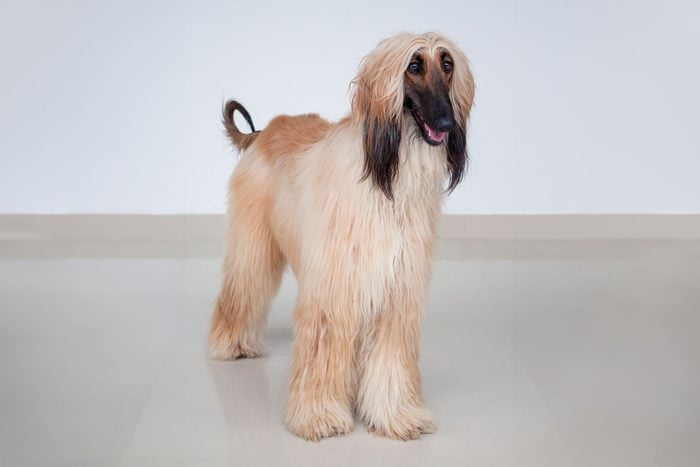
Afghan hound
Afghan hounds might surprise you as a fit for busy schedules. While they need daily exercise, including some strenuous activities, they don’t require constant attention. Unlike some breeds, they can be content while you’re away for work or during long meetings, as long as they get their daily walks or playtime. As sighthounds bred to chase prey, they have quick bursts of energy and require access to a fenced yard or a job with their pet parents a few times a week, according to the Afghan Hound Club of America.
But be warned: Their glamorous looks come with a hefty commitment. These long-haired dogs require daily brushing to prevent matting and weekly bathing with a moisturizing shampoo and conditioner.
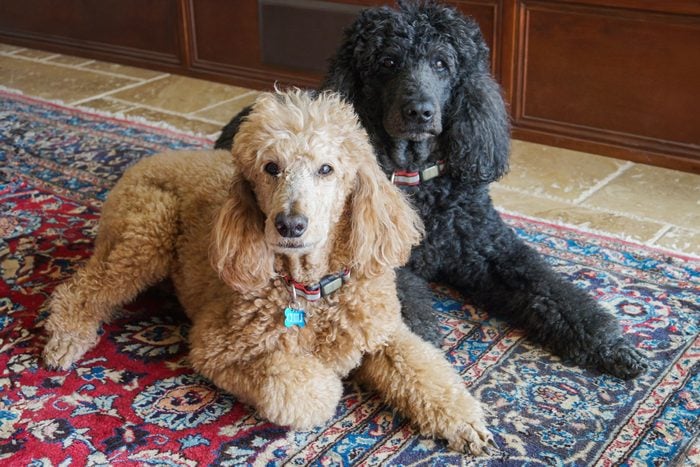
Standard poodle
Standard poodles can be a good choice if you plan to spend the days away. They are intelligent and adaptable dogs that can be left alone and are happy as long as they have access to potty breaks. “Eight hours is a long time to expect any dog breed to stay home alone without a midday break,” says Kaia Wilson, a certified dog trainer specializing in separation anxiety. However, their friendly personality means they’ll gladly accompany a dog walker on outings.
Standard poodles can be startled by loud noises though. So if you live in a bustling city environment, this breed might not be the perfect fit.
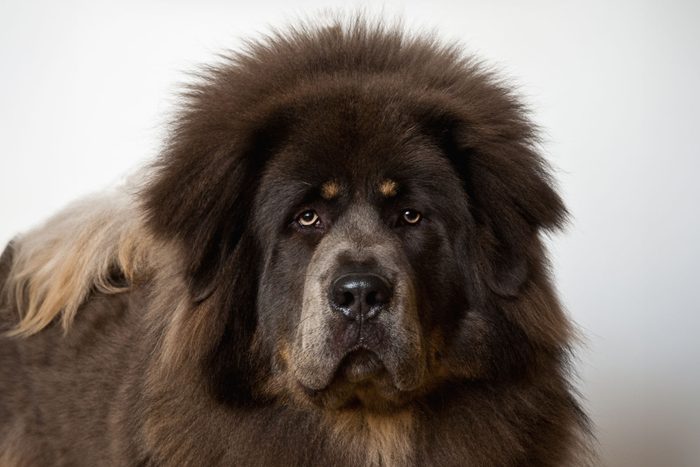
Tibetan mastiff
If you’ve ever wished you could come home from a long day at work to a real-life teddy bear dog, meet the Tibetan mastiff. These giant dogs stand up to 26 inches tall and can weigh up to 150 pounds. The Tibetan Mastiff Club of Great Britain describes their temperament as “calm and patient,” suggesting they could be a good fit for busy pet parents. Plus, according to the AKC, many mastiff breeds were bred to be independent guardians. This can translate to some tolerance for alone time.
Additionally, Tibetan mastiffs tend to be most active at dawn and dusk and relatively inactive during daytime hours, according to the American Tibetan Mastiff Association.
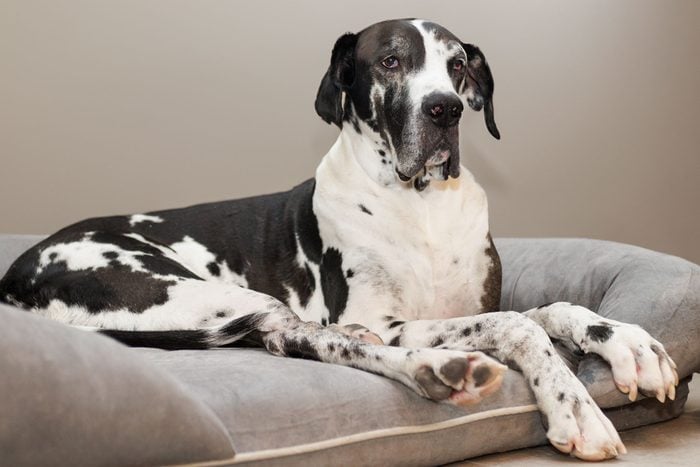
Great Dane
The impressive size of the Great Dane comes with a perk for busy pet parents: low exercise needs. While they still need walks, Dr. Attas recommends gentle strolls to avoid stressing their developing joints. This low-impact routine means they’re content to relax at home while you’re away. Plus, Dr. Attas describes them as “laid-back dogs who enjoy lounging about,” making them perfectly happy to spend time snoozing on the couch (though you might need a bigger one).
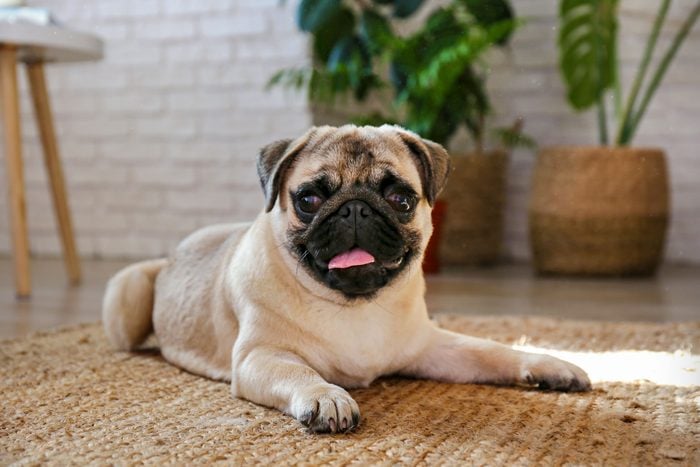
Pug
A proud pug parent herself, Dr. Attas says this scrunchy-faced dog “forms a particularly strong bond with one person, and doesn’t need constant stimulation.” In other words, a pug is one of those dogs that can be left alone. If you’re coming and going, a Kong toy stuffed with peanut butter and some loving cuddles upon your return is perfectly fine. Just remember to factor in bathroom breaks and a morning walk for exercise, Dr. Attas says.
Why trust us
At Reader’s Digest, we’re committed to producing high-quality content by writers with expertise and experience in their field in consultation with relevant, qualified experts. For this piece, Janelle Lesson tapped her experience as a writer who covers pets and pet products, and then Caroline Coile, PhD, an award-winning journalist specializing in canine breeds, health and science, gave it a rigorous review to ensure that all information is accurate and offers the best possible advice to readers. We verify all facts and data, back them with credible sourcing and revisit them over time to ensure they remain accurate and up to date. Read more about our team, our contributors and our editorial policies.
Sources:
- Jill A. Goldman, MSc, PhD, certified applied animal behaviorist and founder of DJG Animal Behavior Services; hone interview, Feb. 29, 2024
- Dr. Amy Attas, DVM, veterinarian and founder of City Pets in-home veterinary service and author of Pets and the City: True Tales of a Manhattan House Call Veterinarian; email interview, March 5, 2024
- Leticia Fanucchi, PhD, DVM, veterinarian and clinical assistant professor of behavior service at Oklahoma State University; email interview, March 1, 2024
- Jennifer Phillips, founder of Separation Anxiety Specialists; email interview, Feb. 28, 2024
- Frederica Caneiro, certified dog trainer at Woofz, an application-based dog training platform. Email interview, March 6, 2024
- Kia Wilson, certified professional dog trainer and Separation Anxiety Pro behavior consultant at Noble Woof Dog Training in Portland, Oregon; email interview, March 5, 2024
- Nature: “Prevalence, comorbidity, and breed differences in canine anxiety in 13,700 Finnish pet dogs”
- Applied Animal Behaviour Science: “Noise sensitivity in 17 dog breeds”
- Journal of the American Veterinary Medical Association: “Risk factors and behaviors associated with separation anxiety in dogs”
- Houndful Hearts
- Great Pyrenees Rescue Montana
- Colorado Shiba Inu Rescue
- American Tibetan Mastiff Organization: “Is the Tibetan Mastiff right for you?”
- Tibetan Mastiff Club of Great Britain: “TMCGB”
- Lhasa Happy Homes: “The Breed”
- Afghan Hound Club of America: “Preserving the Past into the Future”

